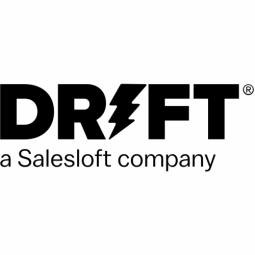下载PDF
Leveraging IoT for Enhanced Network Visibility: A Gigamon Case Study
适用行业
- 石油和天然气
适用功能
- 质量保证
- 销售与市场营销
用例
- 供应链可见性(SCV)
- 视觉质量检测
服务
- 测试与认证
挑战
如果人们访问您的网站并且不了解您所做的事情,他们就会离开并转向竞争对手。我们确实需要进行正确的对话,以帮助人们快速了解我们所做的事情,因为我们提供的是一个复杂的解决方案。我们知道,对访客产生直接影响的直接对话将帮助我们,不仅可以教育和吸引买家,而且可以更具战略性并更快地影响管道时间。
关于客户
Gigamon 是一种网络可视性和监控解决方案,可为所有传输中的数据提供统一的网络可视性和分析。他们的业务遍布全球,在亚太地区、法国、德国、英国和美国设有业务开发代表 (BDR)。他们的目标受众包括已经完成研究并正在寻求无缝、快速体验的网站访问者。
解决方案
Gigamon 部署 Drift 时考虑到了一些重大目标:第一年就受到 Drift 影响的 90 个机会和 450 万美元的管道。他们使用 Drift 的专业服务来设置和管理剧本,并利用 Drift 机器人实现始终在线的参与。他们还使用 Drift 预订现场活动中的演示和会议,并快速跟踪用户以加速渠道的中间阶段。通过 Drift 获得的销售线索质量高于其他渠道,从而实现更高效的销售流程。
运营影响
数量效益
相关案例.

Case Study
Taking Oil and Gas Exploration to the Next Level
DownUnder GeoSolutions (DUG) wanted to increase computing performance by 5 to 10 times to improve seismic processing. The solution must build on current architecture software investments without sacrificing existing software and scale computing without scaling IT infrastructure costs.

Case Study
Remote Wellhead Monitoring
Each wellhead was equipped with various sensors and meters that needed to be monitored and controlled from a central HMI, often miles away from the assets in the field. Redundant solar and wind generators were installed at each wellhead to support the electrical needs of the pumpstations, temperature meters, cameras, and cellular modules. In addition to asset management and remote control capabilities, data logging for remote surveillance and alarm notifications was a key demand from the customer. Terra Ferma’s solution needed to be power efficient, reliable, and capable of supporting high-bandwidth data-feeds. They needed a multi-link cellular connection to a central server that sustained reliable and redundant monitoring and control of flow meters, temperature sensors, power supply, and event-logging; including video and image files. This open-standard network needed to interface with the existing SCADA and proprietary network management software.

Case Study
Refinery Saves Over $700,000 with Smart Wireless
One of the largest petroleum refineries in the world is equipped to refine various types of crude oil and manufacture various grades of fuel from motor gasoline to Aviation Turbine Fuel. Due to wear and tear, eight hydrogen valves in each refinery were leaking, and each cost $1800 per ton of hydrogen vented. The plant also had leakage on nearly 30 flare control hydrocarbon valves. The refinery wanted a continuous, online monitoring system that could catch leaks early, minimize hydrogen and hydrocarbon production losses, and improve safety for maintenance.








